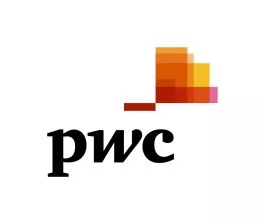The IASB and FASB met last month to discuss their joint project on revenue recognition. We outline the key decisions below.
The boards reached tentative decisions on certain topics relating to the constraint on recognizing variable consideration, collectibility, time value of money, and distributor and reseller arrangements.
The staff will conduct further analysis on certain items including aspects of the variable consideration constraint and presentation issues relating to collectibility. Other key issues still to be redeliberated include licences, contract modifications, allocation of transaction price, disclosures and transition.
What were the key decisions?
Constraint on recognizing variable consideration
Variable consideration that is recognized as revenue will be constrained, under the proposed model, to the amount the entity is reasonably assured to be entitled to. This constraint applies to contracts with a variable price and to those contracts with a fixed price where it is uncertain whether the entity will be entitled to that consideration even after the performance obligation is satisfied.
The boards discussed enhancements to the guidance for determining when an entity's experience is predictive of the amount of variable consideration to which it will be entitled. Further discussions are expected at a future meeting after additional outreach.
Collectibility
Initial and subsequent impairments of receivables should be presented in the same financial statement line item. The boards did not conclude, however, on where the impairment should be presented in the income statement. This debate also raised once again the question of whether collectibility should be a threshold for recognizing revenue. The staff will perform further analysis including evaluating the potential consequences of a collectibility threshold, and whether it would be consistent with the core principles of the proposed model. Further discussion is planned for a future meeting.
The boards also considered when revenue should be recognized for contracts with non-recourse, seller-based financing. They agreed to provide additional implementation guidance about whether a contract with a customer exists, based on when the parties may or may not be committed to perform their obligations under the contract.
Time value of money
The boards agreed to retain the proposed guidance that requires adjustment to the transaction price for the effect of time value of money if the contract has a significant financing component. They will, however, consider at a future meeting some additional implementation guidance for inclusion in the final standard. They also decided to retain the practical expedient that does not require an adjustment for the time value of money if the time difference between performance and payment is one year or less.
An entity does not need to reflect the effect of time value of money for advance payments when the timing of the transfer of goods or services is at the discretion of the customer.
Contract combinations for distributor and reseller arrangements
Promised goods or services in a contract might include offers to provide goods or services that the customer can resell or provide to its customer. These promises are performance obligations even if they are satisfied by another party, and are different from promises to pay cash to the customer, which are accounted for as a reduction of the transaction price.
Is convergence achieved?
Convergence is expected for revenue recognition, as the same principles will be applied to similar transactions under both IFRS and US GAAP. Differences might continue to exist to the extent that the guidance requires reference to other standards before applying the guidance in the revenue standard.
Who's affected?
The proposal will affect most entities that apply IFRS or US GAAP. Entities that currently follow industry-specific guidance should expect the greatest impact.
What's the effective date?
We anticipate the final standard to have an effective date no earlier than 2015.
What's next?
The boards' timeline indicates that they will issue a final standard in the first half of 2013. They will continue to redeliberate over the next several months and perform targeted outreach on some of the more significant changes.
The content of this article is intended to provide a general guide to the subject matter. Specialist advice should be sought about your specific circumstances.

